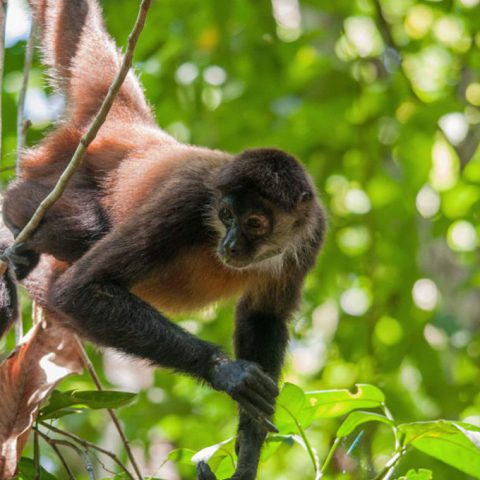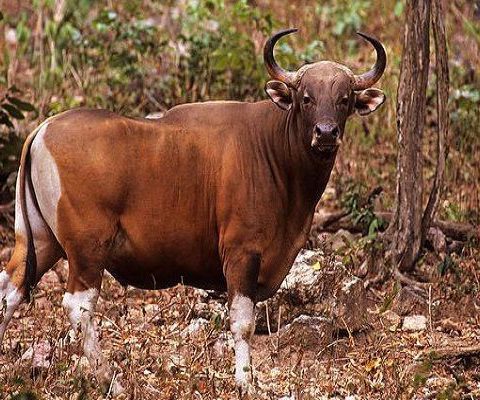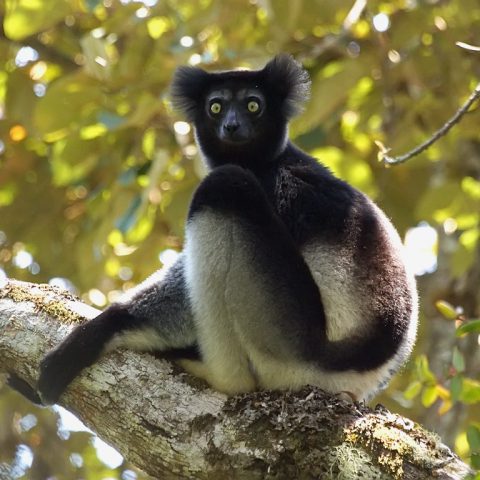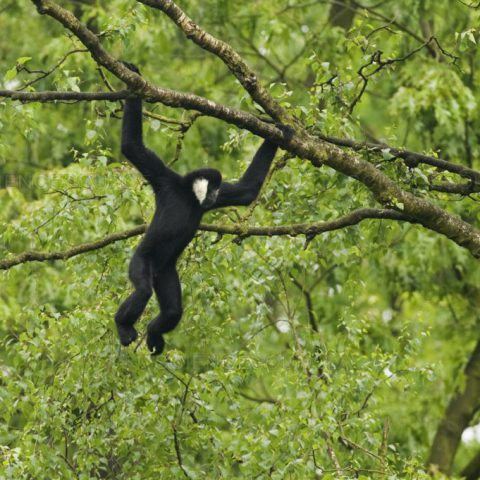Western Lowland Gorilla
![]() Critically Endangered
Critically Endangered
Population
Above 20,000
Size
1.5 – 1.8 metres tall
Weight
140 – 270 kilograms
Countries
Republic of Congo, Angola, Cameroon, Central African Republic, Democratic Republic of Congo, Equatorial Guinea, Gabon
Distribution
The estimated population for the Western Lowland Gorilla is thought to be above 20,000 in the wild. Some estimations will place the animal at 100,000, but this is believed to no longer be accurate, but it is hard to know with the animals being very elusive and often being found in very remote rainforests.
Zoos worldwide have a population of 550 Western Lowland Gorillas.
The Western Lowland Gorilla is the most common and widespread of all gorilla subspecies. The main distribution of the Western Lowland Gorilla is in the forests of the Republic of the Congo. These areas are protected by the remoteness of the large swamp areas.
The Western Lowland Gorilla also occurs in many nearby countries – Cameroon, Central African Republic, Democratic Republic of Congo, Equatorial Guinea, Gabon and Angola, although it is not as abundant in these countries.
Description
The Western Lowland Gorilla is the smallest of all gorillas, but still has great size and strength. The species has jet black skin and black hair all over except for face, hands, feet and their ears. The back of males eventually turns to a grey colour the older they get, which leads to the term Silverbacks.
Other physical features include:
- The animals sport similarities with humans in terms of fingers, thumbs and finger nails
- Large jaw muscles and very strong teeth
- Well built and muscular bodies, which are thought to be as strong as eight weightlifters
- Do stand upright, but walk hunched with their knuckles on the ground



Quick Facts
- Travel in groups within their home ranges which can range from 8 to 45 square kilometres
- Gorillas are not territorial towards other gorillas
- Gorillas often follow seasonal patterns within their home ranges as it will follow availability of food
- Gorillas travel around 3 to 5 kilometres a day
- Human hunters and leopards can also influence the movement patterns.
- Males often travel alone and between groups at times. Before reaching the age of sexual maturity, males leave their group and go through a “bachelor stage” that can last several years either in solitary. Both sexes will leave their birth group, females are never found alone; they just travel from breeding group to breeding group.
- Gorillas harvest most of their food arboreally, but less than half of their night nests are built in trees
- Western lowland gorillas live in the smallest family groups of all gorillas, with an average of 4 to 8 members in each. The leader (the silverback) organizes group activities, like eating, nesting, and traveling in their home range.
- Those who challenge this alpha male are apt to be cowed by impressive shows of physical power. He may stand upright, throw things, make aggressive charges, and pound his huge chest while barking out powerful hoots or unleashing a frightening roar. Despite these displays and the animals’ obvious physical power, gorillas are generally calm and nonaggressive unless they are disturbed.
- Young gorillas, from three to six years old, remind human observers of children. Much of their day is spent in play, climbing trees, chasing one another, and swinging from branches
- Roots & Shoots
- Fruit – primary food during the wet season
- Wild Celery
- Tree bark
- Pulp
- Insects from time to time
The diversity of fruits consumed was higher in the poor fruit year, when favored fruit species, failed to produce large crops.
An adult gorilla will eat up to 18 kilograms of food per day and will climb trees up to 15 metres high to obtain food.
Western Lowland gorillas are seed dispersers, which mean they carry seeds from one place to another, and this trait is beneficial to many of the animals in the forest.
Western Lowland Gorillas mostly live in rainforests, swamp forest, brush, riverine forests and forest edges which range from sea level to 1,300 metres. They are not often found near areas of human influence, avoiding roads and farms.
The threats which face the Western Lowland Gorilla include:
- Hunting for meat for the bushmeat trade
- Logging – destroying of vital gorilla habitat, removing both space to live in as well as removing tree cover and food for the species
- Disease – HIV, Malaria, Ebola. The Ebola epidemic causes a 90% mortality rate in Western Lowland Gorillas. This has heavily wiped out up to two thirds of their population
Conservation Efforts
The Gorilla Organisation
This excellent organisation, The Gorilla Organisation has many projects across the Congo, Rwanda and Uganda. These include supporting rangers who are in the field protecting the animals, helping local communities with farming and beekeeping for alternative sources of income and educating children throughout the area.







